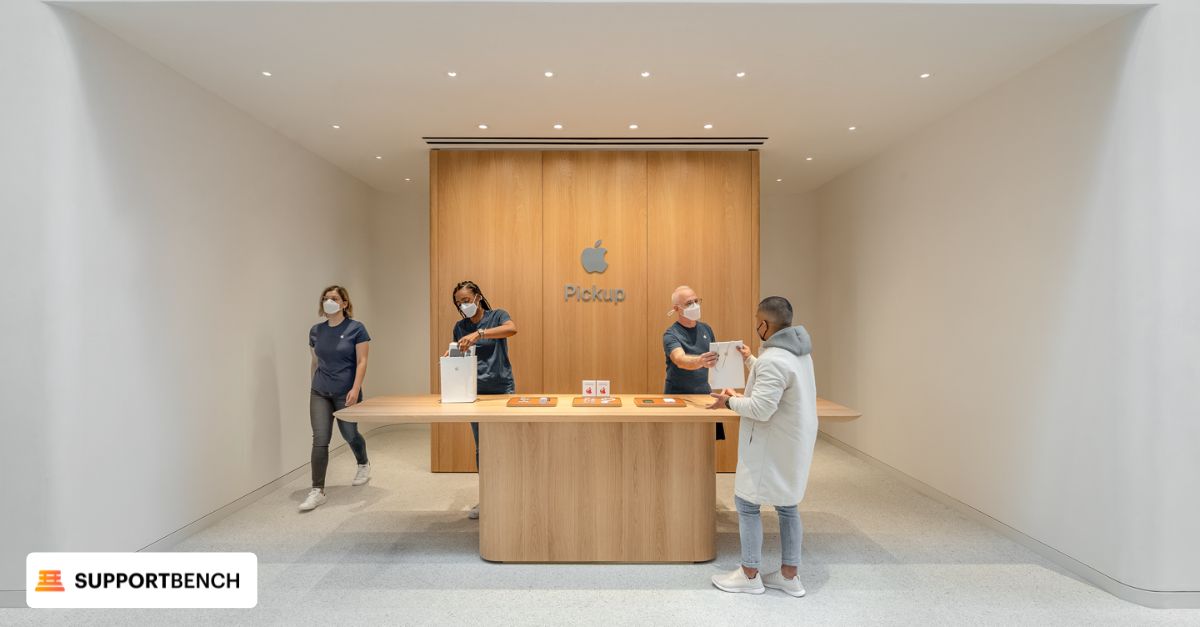Customer expectations are evolving, and businesses can no longer depend solely on reactive support. Proactive customer support anticipates and resolves issues before they escalate, leading to higher customer satisfaction and lower support costs.
This guide explores the key benefits of proactive customer support, step-by-step strategies for implementation, and real-world case studies of businesses successfully using this approach.
Whether you’re a customer service manager aiming to reduce churn or a business owner looking to enhance your brand’s support experience, this guide will equip you with the insights and tools to stay ahead of customer expectations.
What is proactive customer support?
Proactive customer support is a strategy where businesses anticipate and resolve issues before they escalate, rather than waiting for customers to report problems. This approach enhances customer experience, builds trust, and reduces frustration.
To implement proactive support, companies utilize:
- Predictive analytics to identify potential concerns before they arise.
- Customer support automation tools to streamline solutions and minimize response times.
- Self-service resources, such as knowledge bases and FAQs, to empower customers to find answers independently.
By addressing customer needs in advance, businesses can reduce support tickets, improve operational efficiency, and foster long-term customer loyalty.
Benefits of Proactive Customer Support
Implementing proactive customer support delivers tangible benefits that enhance both customer experience and business performance:
✔︎ Higher Customer Satisfaction & Loyalty – Addressing issues before they arise fosters trust and strengthens long-term relationships.
✔︎ Fewer Support Tickets & Lower Costs – Resolving concerns early reduces inbound inquiries, optimizing resources and lowering operational expenses.
✔︎ Stronger Brand Reputation – A proactive approach positions businesses as customer-centric leaders, improving public perception.
✔︎ Competitive Edge – Companies that anticipate and meet customer needs gain an advantage in a crowded market.
By investing in proactive strategies, businesses create a seamless support experience, reduce friction, and improve overall efficiency and profitability.
How to Implement Proactive Customer Support
Transitioning from reactive to proactive customer support requires a structured approach that integrates predictive insights, automation, and a customer-first mindset. Here’s how businesses can effectively anticipate and resolve issues before they arise:
1. Use Predictive Analytics to Anticipate Needs
Leverage data analytics and AI to identify patterns in customer behaviour, service trends, and recurring issues. Analyzing past interactions, product usage, and support inquiries allows businesses to predict common pain points and take preemptive action.
Example: A SaaS company notices users struggling with a new feature. Proactively sharing a tutorial via email or in-app notifications reduces confusion and prevents support requests.

2. Automate Customer Communication
Set up automated messages to keep customers informed, provide guidance, and prevent frustration. Proactive notifications can alert users about potential disruptions, offer troubleshooting steps, or remind them of essential actions.
Example: An e-commerce store automates shipping updates and delayed order alerts, reducing the volume of “Where’s my order?” inquiries.
3. Build a Self-Service Knowledge Base
A well-structured knowledge base empowers customers to find solutions independently, reducing direct support interactions.
Best Practices for Creating an Effective Knowledge Base:
✔︎ Offer FAQs, step-by-step guides, video tutorials, and troubleshooting articles.
✔︎ Continuously update self-service content based on customer feedback and emerging support trends.
4. Actively Monitor Customer Sentiment and Feedback
Track reviews, surveys, and support interactions to detect dissatisfaction early. Customer feedback tools, NPS surveys, and sentiment analysis help identify pain points and refine the support experience.
Example: A subscription service notices a dip in satisfaction scores after a pricing change. They proactively reach out with an explanation and exclusive offers, improving retention.
5. Train Support Teams on a Proactive Mindset
Equip customer service agents with the skills and authority to anticipate customer needs. Encourage follow-ups, personalized recommendations, and preemptive outreach to prevent small issues from escalating.
Best Practice: Implement scenario-based training where agents practice identifying and addressing potential concerns before customers bring them up.
Take Action Today!
Proactive customer support prevents issues before they arise and strengthens customer relationships.
With AI-driven customer service solutions from Supportbench, businesses can:



Start delivering exceptional proactive customer support today!

Leveraging AI for Proactive Customer Support
Artificial intelligence (AI) is revolutionizing customer service by helping businesses anticipate issues and deliver timely solutions before customers even reach out for support. Through AI-driven customer service solutions, companies can analyze customer behavior, predict potential problems, and automate responses, creating a seamless and efficient support experience.
How AI Enhances Proactive Customer Support
Predictive Issue Detection: AI analyzes historical data to identify trends and prevent recurring issues. For example, a software company detects patterns in user activity and proactively sends troubleshooting steps before a problem escalates.
Automated Customer Engagement: AI-powered chatbots and virtual assistants provide real-time, proactive support by:
- Sending reminders and alerts to prevent potential issues.
- Offering personalized recommendations based on customer behavior.
- Delivering instant solutions before customers reach out for help.
Intelligent Self-Service: AI enhances self-service resources by:
- Suggesting relevant articles and FAQs based on customer queries.
- Improving knowledge base efficiency, reducing direct support interactions.
By integrating AI-driven strategies, businesses can streamline support operations, improve customer satisfaction, and reduce operational costs—all while staying ahead of customer expectations.
Real-World Examples of Proactive Customer Support in Action
Proactive customer support is a game-changer for businesses aiming to enhance customer satisfaction, reduce support inquiries, and build long-term loyalty. Below are examples of companies that have successfully integrated proactive strategies into their customer service approach.
Daily Harvest: AI-Driven Personalization
Daily Harvest, a meal delivery service, utilizes artificial intelligence to analyze customer orders and browsing history, ensuring personalized product recommendations. By doing so, they prevent customer fatigue and improve retention.
Additionally, AI-powered chatbots provide instant support, streamlining operations and boosting customer satisfaction.1

Apple’s Genius Bar: Personalized Tech Support
Apple’s Genius Bar exemplifies proactive in-person customer support. Customers are informed about this service at the time of purchase, allowing them to schedule appointments for personalized assistance.
Whether troubleshooting device issues or providing optimization tips, this hands-on support ensures customers maximize the value of their Apple products, leading to increased loyalty.2
Amazon: Proactive Delivery Notifications
Amazon has mastered proactive communication by notifying customers in advance of potential delivery delays. Rather than waiting for complaints, they send updates and, in some cases, offer compensation for Prime members.
This transparency reduces customer frustration and minimizes the number of “Where’s my order?” inquiries, enhancing trust and customer satisfaction.3
Starbucks: AI-Powered Ordering Assistance
Starbucks has integrated AI-driven chatbots into its mobile ordering system, simplifying the process for customers. The chatbot assists with order customization, provides recommendations, and alerts customers when their order is ready.
By reducing wait times and enhancing convenience, this strategy improves the overall ordering experience and encourages repeat business.4
AT&T: Personalized Onboarding to Reduce Confusion
AT&T identified that new customers often struggled with understanding their first bill. To prevent frustration before it arises, they introduced personalized onboarding videos explaining the billing process. This proactive approach has significantly reduced support call volumes while improving customer retention and overall satisfaction.5
Why These Strategies Work:
By anticipating issues and offering solutions before customers encounter problems, these companies have built stronger relationships, streamlined operations, and positioned themselves as industry leaders.
Businesses that implement similar proactive strategies can expect fewer support inquiries, enhanced efficiency, and a stronger brand reputation.
Conclusion
Proactive customer support is no longer optional—it’s essential for businesses that want to enhance customer satisfaction, reduce support costs, and foster long-term loyalty. By anticipating issues, leveraging AI-driven customer service solutions, and providing self-service options, companies can create a seamless, frustration-free support experience that keeps customers engaged.
Adopting a proactive approach doesn’t have to be complicated. With Supportbench, you can integrate predictive analytics, automate customer interactions, and optimize self-service resources to stay ahead of customer expectations.Now is the time to elevate your customer support. Book a demo with Supportbench today!












